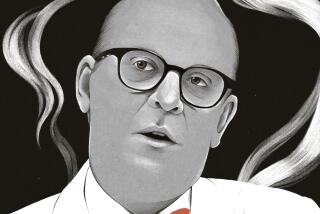Capriati’s Fault: in the Public Eye : Celebrity: Once again, the public pillories an icon who proves merely mortal.
- Share via
When 18-year-old Jennifer Capriati was arrested last month in a seedy Florida motel for marijuana possession, along with two companions accused of using crack and heroin, the mainstream media dubbed the tennis star a “grunge kid,” part of an “ever-shifting group of grunge punks.” That seemed to say it all, in that uniquely American media way of saying nothing: the sound bite reduced to the word-association bite.
Grunge--as music, as fashion that never was, as nebulous and exaggerated culture--is not the problem in Capriati’s life. But it’s a convenient cover for the real culprits. When Kurt Cobain killed himself, that gave grunge its evil patina. Now, if we don’t like the way something turns out in the complex, difficult world of young people, we can sweep it under the grunge carpet. Instead of looking at Capriati as the Judy Garland of tennis, which is what she really is, we tag her a grunge casualty and, comfortable in our immunity, shake our heads and wag our fingers at her fall from idolhood and consider the matter closed.
Cobain had his problems--real and finally overwhelming demons--but no one put the shotgun to his head. He took himself off the job. Capriati was mugged by her own people: her driving parents, coaches, managers and everybody making a buck (20 million bucks, actually) off of her. They beat the golden goose into a coma. From the press reports, it’s glaringly obvious that all the signs of an emotional breakdown were there--along with the hints of a drug problem. She’s now in rehab, reportedly for the second time.
Where was the press when she began to look and act like a disturbed teen-ager? Even if the same reporters now sermonizing over America’s fallen tennis sweetheart couldn’t see her cracking under the strain, which they added to by covering her obsessively, why, after the fact, were they nosing through her record collection and marking down that she listened to Nirvana and Ice Cube? It’s not just ignorance, although, hey, let’s not underestimate that possibility; it’s also a reflex of our culture to admonish the fallen charioteer racing at breakneck speeds for our amusement. Because Capriati’s real sin, unspoken though it is, is not that she had a weekend binge with a bunch of other kids, but that she declined the prize of an ongoing opportunity to make incalculable wealth. Sports Illustrated lamented, “Now all that promise had gone to pieces,” primarily meaning her gifted athletic future, but also Capriati as a business--in any case, with absolutely no thought to the damage done to her as a person. At the end of the article, the writer listed all the lost endorsements with a gravity that intimated this was the real dimension of the tragedy.
We blame our cultural victims for what we perceive as the barbarism of repudiating the American Dream. But it is we who are barbaric, who drive 18-year-olds to an emotional scrapheap so that we can dress our walls with larger-than-life super-heroes, collecting them like pieces of art, discarding broken ones like rubbish, forgetting, or maybe never even caring, that they are human.






